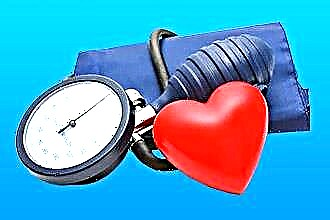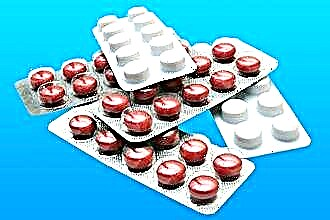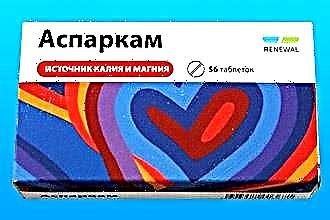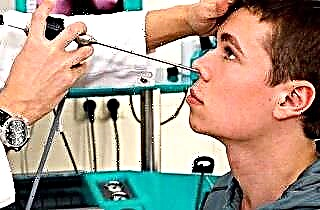Comprehensive treatment of patients with cardiological profile implies not only elimination of the main symptoms and impact on the cause of the pathology, but also improvement of the functional state of the heart muscle. Normalization of metabolic processes and an increase in myocardial resistance to unfavorable environmental factors is provided by a group of metabolic drugs. Riboxin is considered one of the most used drugs with minimal harm and a combined effect on different organs and systems.
Instructions for the use of Riboxin
 Riboxin (international non-proprietary name - Inosine) belongs to the group of non-steroidal anabolic drugs, which has:
Riboxin (international non-proprietary name - Inosine) belongs to the group of non-steroidal anabolic drugs, which has:
- antianginal (relieves chest pain with angina pectoris);
- antiarrhythmic (by improving ion transport in cells);
- antihypoxic (eliminates oxygen starvation of tissues);
- moderate hypotensive (lowers blood pressure) actions.
The most studied use of medication in cardiology for the rehabilitation of patients with coronary heart disease, secondary prevention (relapse, progression or complications of pathologies). In addition, Riboxin is actively used in sports as a legal doping, since it improves endurance and fitness indicators.
The active substance and the mechanism of work of the drug
The active substance of Riboxin is Inosine, a precursor of adenosine triphosphoric acid (ATP), the main energy substrate in the human body. Penetrating into the systemic circulation (after oral or parenteral administration), the drug goes through a cascade of reactions with the formation of aromatic carbohydrates (ribose) and hypoxanthine.
Riboxin effect:
- antihypoxic effect: penetrating through the membrane of erythrocytes (red blood cells), increases the concentration of energy molecules and speeds up the procedure for the release of oxygen from the bound form. Gas delivery to the heart improves metabolic processes in cardiomyocytes, reduces the severity of pain;
- hepatotropic ("liver protection") - the incorporation of hypoxanthine into the energy reserves of the tissue improves organ functions and recovery processes;
- hypotensive (reduces pressure): activation of metabolism in the cells of the vascular wall promotes the release of vasodilators and the expansion of the lumen of the arteries;
- antiarrhythmic - accelerate the transport of calcium ions through the membrane of cardiomyocytes, which normalizes the processes of excitation and repolarization in the heart muscle;
- reparative - accelerates the processes of restoration of the mucous membrane in the digestive tract;
- anabolic - accelerates the synthesis of proteins in the body (the main characteristic used by athletes).
Hypoxanthine is one of the substrates of purine metabolism (nucleotide breakdown), the end product of which is uric acid. With an overdose of Riboxin, the concentration of the latter in the blood increases.
Composition, form and dosage of the drug
Riboxin is available in two main forms: oral and parenteral for convenient use in a variety of clinical situations.
The composition of the preparation and the main characteristics are presented in the table.
| Release form | Inosine dose | Excipients | Organoleptic properties |
|---|---|---|---|
| Tablets, capsules | 200 mg |
|
|
| Solution for injection 2% -5 ml | 1 ml - 20 mg |
| Colorless transparent liquid. Light yellow tint allowed |
According to the instructions for the use of Riboxin, the maximum daily amount of the drug is isolated - 2.4 grams, which can be divided into 3 doses. The frequency of administration and dosage is determined by the indication for the appointment and the form of release used.
Indications: from what and for what purpose?
A wide range of effects and safety determines the use of the drug in various branches of medicine. The most common indications for Riboxin use are:
- ischemic heart disease (CHD): stable exertional angina, diffuse cardiosclerosis;
 arterial hypertension (as part of complex treatment);
arterial hypertension (as part of complex treatment);- cardiomyopathy (hypertrophic, dilated, restrictive);
- rhythm and conduction disturbances (sinus and atrial arrhythmias, extrasystoles);
- rehabilitation period after myocardial infarction;
- cirrhosis and fatty degeneration of the liver;
- alcoholic hepatitis;
- antidote therapy for poisoning with digitalis drugs (digitalis intoxication);
- urocoproporphyria - an enzymatic pathology of hemoglobin synthesis;
- surgery on a single kidney (hypoxanthine has a renoprotective effect in conditions of artificial circulation);
- in ophthalmology: to improve vision, as part of the complex treatment of open-angle glaucoma;
- in oncological practice: to improve blood formation in leukopenia (against the background of bone marrow irradiation and chemotherapy).
For intravenous administration
The injectable form of the drug is most often prescribed by cardiologists in a hospital setting. Riboxin in ampoules is used for:
- acceleration of myocardial recovery processes after a heart attack;
- reduction of pain syndrome with angina pectoris;
- improved response to antiarrhythmic therapy;
- prevention of progressive sclerosis of cardiomyocytes in patients with coronary heart disease;
- with digitalis poisoning;
- in surgical (nephrological) practice.
The drug is used for intravenous administration, intramuscular injections of Riboxin are not prescribed due to ineffectiveness (it is slowly absorbed and disintegrated).
Recommended doses of the parenteral form of the drug:
- Dropper (slow injection at a rate of 60 drops / minute diluted in 250 ml of 5% glucose solution): 1 day - 10 ml of 2% Riboxin. In the absence of undesirable consequences - from the next day, 20 ml - 1 time per day. The duration of the course is 10-15 infusions.
- Bolus (jet injection without dilution) up to 400 mg / day for arrhythmias and kidney interventions. The maximum allowable dose for a single use is 1200 mg.
For taking in pills
The oral form of Riboxin is intended for long-term administration (up to 3 months), by patients with:
 ischemic heart disease (chronic forms);
ischemic heart disease (chronic forms);- cardiomyopathies;
- cirrhosis and other liver pathologies associated with alcohol abuse;
- visual impairment in glaucoma and other conditions.
The recommended dose of the drug on the first day: 1 tablet (capsule) 3-4 times a day. If the answer is yes - 2 tablets 3 times a day.
Patients with impaired purine metabolism (urocoproporphyria) are prescribed Riboxin 1 capsule 4 times a day for 3 months.
Contraindications
Riboxin belongs to a group of metabolic agents that are sold by prescription in pharmacies. Uncontrolled long-term use of the drug leads to systemic metabolic disorders.
The list of conditions in which Riboxin is contraindicated:
- hypersensitivity (allergies) to any of the components;
- age up to 18 years (the use of the drug in children has not been studied, therefore it is recommended for use only by adults);
- pregnancy and lactation (breastfeeding) in a woman;
- pathology of the kidneys (the solubility of the drug in water and partial excretion in the urine require the normal state of the excretory system to prevent overdose);
- gout and other conditions accompanied by an increased content of uric acid in the blood.
Patients with diabetes mellitus should take into account that 1 Riboxin tablet contains 0.06 bread units.
Side effects
The undesirable consequences of taking Riboxin are mainly associated with the general reactions of the body to taking medications:
 allergic reactions: skin redness, itching rash (you must stop taking the drug and inform your doctor about the side effect);
allergic reactions: skin redness, itching rash (you must stop taking the drug and inform your doctor about the side effect);- headache (due to a drop in blood pressure in the vessels of the brain);
- cardiopalmus;
- arterial hypotension;
- nausea and vomiting;
- insomnia;
- decreased appetite and unmotivated weight loss;
- exacerbation of gout.
With the injection method of administration, patients often complain of general weakness and redness at the injection site.
Can I drink Riboxin for prevention?
Metabolic agents with a predominant cardiotropic effect are prescribed as a complex therapy of the underlying disease, which also implies the prevention of complications.
Systematic administration of the drug is allowed within the maximum long-term course (up to 3 months) in compliance with the dosage rules for patients with:
- the first signs of deteriorating vision (prevention of progression);
- a chronic form of ischemic heart disease for the prevention of myocardial infarction;
- alcoholic hepatitis (avoiding cirrhosis).
However, given the possible side effects and the need for dose selection, it is recommended to consult a doctor.
The uncontrolled use of Riboxin as an anabolic in the practice of athletes is most often recorded.
Analogues and substitutes
The modern pharmaceutical market offers the patient a list of drug analogues that differ in appearance and price:
- tablet forms: Riboxin Avexima, Riboxin-Lect, Ribonosin;
- injection solution: Inosie-F, Inosin-Eskom.
If there are contraindications to Riboxin, it is recommended to choose a substitute with a similar effect for the complex therapy of the underlying disease.
The metabolic agents most used in cardiological practice:
 Panangin, Asparkam - drugs with a high potassium content, which is prescribed to patients with rhythm and conduction disturbances;
Panangin, Asparkam - drugs with a high potassium content, which is prescribed to patients with rhythm and conduction disturbances;- Trimetazidine (Preductal) - corrects metabolic processes at the cellular level, eliminates the harmful effects of free radicals (under-oxidized metabolites), enhances the compensatory capabilities of the heart;
- Antioxidants (inhibit the processes of free radical oxidation in cells): vitamins A, E, C, selenium and zinc preparations;
- Adenosine triphosphate is the direct form of the ATP molecule, which is most often used to relieve attacks of supraventricular tachycardia. Second generation - ATP-long with prolonged action.
The selection of funds is carried out depending on individual sensitivity, the presence of additional signs of deficiency of vitamins or trace elements in the patient.
Conclusions
Riboxin is a metabolic agent that is widely used in the clinical practice of doctors in the former CIS. The spectrum of pharmacological actions (antiarrhythmic, antianginal, antihypoxic and others) determines the use of the drug in patients with cardiovascular, gastrointestinal and ophthalmic pathology. The normalization of metabolism at the cellular level makes Riboxin a reasonable addition to the main complex of therapy.

 arterial hypertension (as part of complex treatment);
arterial hypertension (as part of complex treatment); ischemic heart disease (chronic forms);
ischemic heart disease (chronic forms); allergic reactions: skin redness, itching rash (you must stop taking the drug and inform your doctor about the side effect);
allergic reactions: skin redness, itching rash (you must stop taking the drug and inform your doctor about the side effect); Panangin, Asparkam - drugs with a high potassium content, which is prescribed to patients with rhythm and conduction disturbances;
Panangin, Asparkam - drugs with a high potassium content, which is prescribed to patients with rhythm and conduction disturbances;

